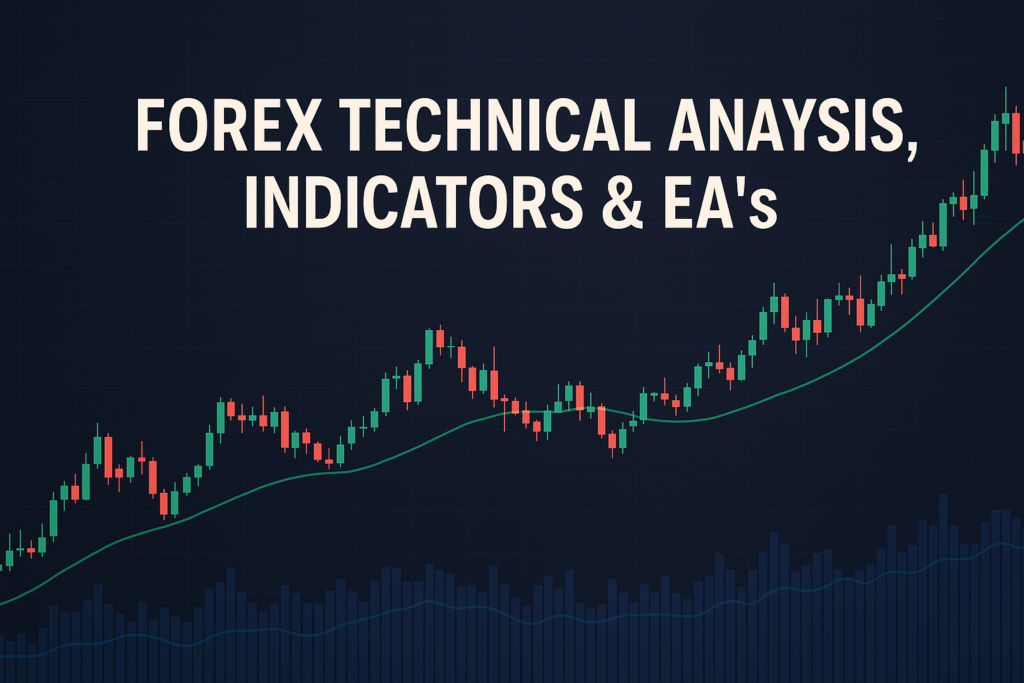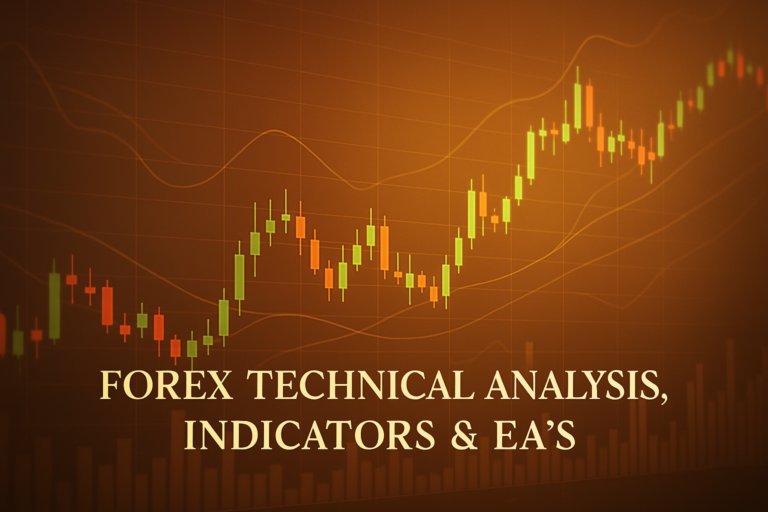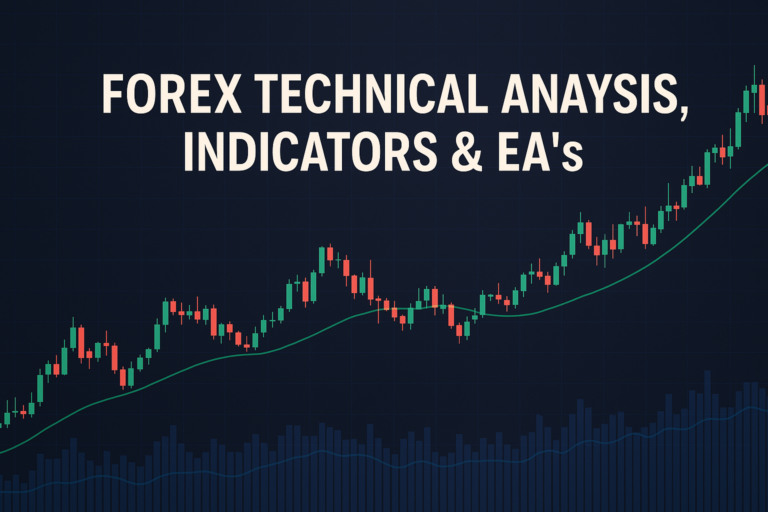
The Moving Average of Oscillator (OsMA) is a key tool for Forex traders, helping identify trends and making informed trading decisions.
The Moving Average of Oscillator (OsMA) is a popular tool in Forex trading that helps traders understand market trends better. It combines two essential elements: the moving average and the oscillator. By doing this, OsMA allows traders to see momentum changes in price movements clearly. It tells us not just where the price has been, but also where it might go next.
Despite its usefulness, many traders, both new and experienced, often struggle with using the Moving Average of Oscillator (OsMA). This can be due to its complex appearance or a lack of understanding of how to interpret its signals. However, mastering OsMA can significantly improve trading decisions. Knowing how to apply this tool can lead to better strategies and more successful trades.
This article will guide you through the essentials of the Moving Average of Oscillator (OsMA), its history, advantages, disadvantages, and practical strategies. You will learn how to apply it on popular platforms like MT4 and MT5, and we will even share some trading strategies that combine OsMA with other indicators.
In Forex trading, sometimes we face order rejection. This happens when a trade order is not executed as expected. Understanding this can help you navigate your trading experience better.
What is a Moving Average of Oscillator (OsMA)?
The Moving Average of Oscillator (OsMA) is like a weather forecast for traders. Just as a weather app tells us whether to carry an umbrella, OsMA helps traders understand market conditions. It is calculated by taking the difference between a fast and a slow moving average. When the OsMA line is above zero, it suggests buying opportunities; when it’s below zero, it indicates selling opportunities.
Types of Moving Average of Oscillator (OsMA)
There are several types of moving averages used in OsMA:
- Simple Moving Average (SMA): This is the easiest type and calculates the average price over a specific period.
- Exponential Moving Average (EMA): This type gives more weight to recent prices, making it more responsive to changes.
- Weighted Moving Average: This type applies more weight to certain prices to reflect their importance.
How Moving Average of Oscillator (OsMA) Smooths Out Price Action
The OsMA smooths out price action by filtering out the noise created by daily price fluctuations. It presents a clearer picture of the trend by averaging the price over time. This helps traders make better decisions without being overwhelmed by minor price changes.
Common Periods Used and Why
Traders commonly use periods like 5, 10, 14, and 20 for the Moving Average of Oscillator (OsMA). These periods balance responsiveness and reliability. Shorter periods react quickly to price changes but may create false signals, while longer periods provide more stability but react slower.
The History of Moving Average of Oscillator (OsMA): How It Became Popular
Origin of Moving Average of Oscillator (OsMA)
The Moving Average of Oscillator (OsMA) was developed by Gerald Appel in the late 1970s. He wanted to help traders understand market momentum better. This tool was designed to simplify decision-making by providing clear signals based on moving averages.
When Did Traders Start Using It Widely?
As Forex trading grew in popularity in the 1980s and 1990s, traders began widely adopting the OsMA. The simplicity and effectiveness of the indicator attracted many, making it a staple in traders’ toolkits.
Real-Life Stories
Many professional traders have credited their success to the Moving Average of Oscillator (OsMA). For instance, a trader named Sarah used OsMA to spot a trend reversal in the EUR/USD pair. By acting on the signals, she made significant profits, turning her trading journey into a success story.
Advantages and Disadvantages of Moving Average of Oscillator (OsMA)
Advantages:
- Helps Identify Trends Easily: The OsMA provides clear indications of trend directions, making it easier for traders to make decisions.
- Useful for Dynamic Support and Resistance: OsMA can help identify key support and resistance areas based on its signals.
- Works Well for Crossover Strategies: Combining OsMA with other moving averages can enhance trading strategies.
Disadvantages:
- lags Behind Price Movements: Because it is based on past prices, OsMA may not always reflect current market conditions.
- Can Give False Signals in Sideways Markets: In a ranging market, OsMA may produce misleading signals that can lead to losses.
How to Apply Moving Average of Oscillator (OsMA) on MT4 & MT5
Step-by-Step Guide to Adding Moving Average of Oscillator (OsMA) on Charts
To add the OsMA to your MT4 or MT5 chart, go to the “Insert” menu, choose “Indicators,” then “Oscillators,” and select “Moving Average of Oscillator.” This will place it on your chart for analysis.
Customizing Moving Average of Oscillator (OsMA) Settings
You can customize the OsMA settings by right-clicking on the indicator and selecting “Properties.” Here, you can change periods, colors, and types to suit your trading style.
Saving Templates for Easy Application
After customizing your OsMA, you can save your template. Go to “Templates” in the top menu and click “Save Template.” This will make it easier to apply your settings in future trades.
5 to 7 Trading Strategies Using Only Moving Average of Oscillator (OsMA)
All Time Frame Strategy (M5 to D1)
This strategy works across all time frames. When the OsMA crosses above zero, consider it a buy signal. Conversely, if it crosses below zero, it may be a sell signal. For example, if you see the OsMA turning positive on the H1 chart, it could be a good time to buy.
Trending Strategies
In a strong trend, look for the OsMA to stay above zero for buying or below zero for selling. If the OsMA remains above zero for a few periods, it confirms the uptrend. For instance, if the EUR/USD shows a consistent upward trend with OsMA above zero, it’s a signal to buy.
Counter Trade Strategies
This strategy involves trading against the trend. If the OsMA shows a sudden drop while the price is rising, it could indicate a reversal. For example, if GBP/USD is rising, but OsMA starts falling, a sell position might be suitable.
Swing Trade Strategies
For swing trades, look for crossovers between the OsMA and the zero line. If the OsMA crosses above the zero line, consider it a buy. If it crosses below, it’s a sell signal. For instance, if you spot a crossover on the daily chart, it could lead to a profitable swing trade.
5 to 7 Trading Strategies Combining Moving Average of Oscillator (OsMA) with Other Indicators
All Time Frame Strategy (M5 to D1)
This strategy uses the OsMA alongside the Relative Strength Index (RSI). When the OsMA crosses above zero and the RSI is above 50, it’s a strong buy signal. For example, if both indicators align on the M15 chart, it could lead to a profitable trade.
Trending Strategies with Bollinger Bands
In a trending market, combine OsMA with Bollinger Bands. When the OsMA is above zero and the price touches the upper band, it may signal a buy. Conversely, if the OsMA is below zero and the price touches the lower band, consider selling. For instance, if you see this setup in the USD/JPY pair, it might be a great opportunity.
Counter Trade Strategies with MACD
Use OsMA with the MACD for counter-trend trades. If the OsMA moves below zero while the MACD line crosses above the signal line, consider selling. For example, if this occurs in the AUD/CAD market, it could indicate a potential downturn.
Swing Trade Strategies with Moving Averages
Combining OsMA with moving averages can enhance swing trade setups. When the OsMA crosses above zero and the price is above the 50-period moving average, it’s a buy signal. If you see this pattern on the H4 chart for EUR/CHF, it could lead to a successful trade.
In Forex trading, sometimes we face issues with the trade interface. Understanding how to interact with the trade interface is vital for smooth trading experiences.
Top 10 FAQs About Moving Average of Oscillator (OsMA)
1. What does OsMA tell you?
The OsMA indicates market momentum by showing the difference between two moving averages. It helps traders identify buy and sell opportunities.
2. Is OsMA suitable for all trading styles?
Yes, OsMA can be adapted for various trading styles, including scalping, day trading, and swing trading.
3. How do you interpret OsMA signals?
When the OsMA is above zero, it suggests a bullish trend, while below zero indicates a bearish trend.
4. Can OsMA be used alone?
While OsMA can be effective on its own, combining it with other indicators can provide more reliable signals.
5. What time frames work best with OsMA?
OsMA works well across all time frames, but shorter periods may yield quicker signals, while longer periods provide more stability.
6. How often should I check OsMA signals?
It depends on your trading strategy. Day traders may check signals multiple times a day, while swing traders may check daily or weekly.
7. Can OsMA be used for Forex pairs and commodities?
Yes, OsMA can be applied to any financial instrument, including Forex pairs, commodities, and stocks.
8. What are the common mistakes to avoid with OsMA?
Some common mistakes include ignoring market conditions, not using risk management, and relying solely on OsMA without other confirmations.
9. How can I practice using OsMA?
Many brokers offer demo accounts where you can practice trading with OsMA without risking real money.
10. Is OsMA a guarantee for success?
No tool can guarantee success in trading. OsMA is a useful indicator, but it should be used as part of a broader strategy.
Conclusion
In summary, the Moving Average of Oscillator (OsMA) is a powerful tool for traders looking to enhance their strategies. Understanding how it works can lead to better decision-making and increased profits. Remember to practice and test your strategies in a demo environment before risking real money.
As you embark on your trading journey, keep learning and experimenting. The more you understand the Moving Average of Oscillator (OsMA), the better equipped you will be to navigate the Forex market successfully.
This resource adds more value to your forex learning journey BabyPips, FX Empire
Expand Your Knowledge
- 📌 Forex Trading Learning Road Map
- 📌 Forex Trading Course with no Fees
- 📌 Forex Trading Issues, Problems, and Solutions
- 📌 Forex Daily Forecast & Live Updates
- 📌 Forex Fundamental & News Analysis: Tomorrow’s Market Movers & Trade Opportunities
- 📌 Forex Education Hub: Learn & Profit
- 📌 Forex Technical Analysis, Indicators & EA’s
Start Trading Today
Ready to take your forex trading to the next level? Open an account with Exness, one of the most trusted platforms in the industry. 👉 Sign Up Now and start trading with confidence!
Exness stands out with ultra-low spreads for mini traders, instant withdrawals, and zero spread accounts for pro traders. Trusted since 2008, Exness offers lightning-fast execution, no hidden fees, and a secure, transparent trading environment—giving you the edge you need to succeed. 🚀 Join now and trade smarter!
Watch this helpful video to better understand Moving Average of Oscillator (OsMA):
Note: The video above is embedded from YouTube and is the property of its original creator. We do not own or take responsibility for the content or opinions expressed in the video.
In the video, the presenter explains how to read and interpret the Ozma (Oscillator of Moving Averages) in the context of Forex trading. The Ozma is a tool that helps traders identify market momentum by distinguishing between bullish (positive) and bearish (negative) trends. The central line serves as a dividing point, where values above indicate bullish momentum, while values below denote bearish momentum. The key takeaway is to observe the transitions of the Ozma between positive and negative values, as these shifts can signal potential changes in market direction. For instance, when the Ozma moves from negative to positive, it typically indicates a surge in buying activity, suggesting that buyers are entering the market. Conversely, when it shifts to negative territory, it can signal profit-taking by buyers or the entrance of sellers, resulting in a drop in prices.
The video further highlights the importance of analyzing the histogram associated with the Ozma for a deeper understanding of market trends. A negative histogram that is less intense than previous negative momentum may simply indicate a pullback rather than a full reversal. Conversely, a significant surge in negative momentum suggests that sellers are in control. Additionally, the presenter points out that extreme readings on the Ozma can indicate a peak in momentum, suggesting that traders might want to exit their positions to secure profits. Recognizing these key levels can help traders avoid potential corrections or declines. The Ozma is a valuable tool for short-term traders looking to capitalize on market movements, as it allows them to make informed decisions about when to enter or exit trades based on momentum indicators.
In the world of Forex trading, understanding concepts such as the Ozma is crucial for success. Forex, or foreign exchange, is the global marketplace for trading national currencies against one another. It operates 24/5, allowing traders to buy, sell, or exchange currencies with the goal of making a profit. The dynamic nature of this market means that it can be influenced by various factors, including economic data releases, geopolitical events, and shifts in market sentiment. Therefore, having a solid foundation in trading strategies and tools, like the Ozma, is essential for both novice and experienced traders. For those looking to dive deeper into the world of trading, understanding the nuances of fx foreign exchange can provide valuable insights and enhance trading performance.



